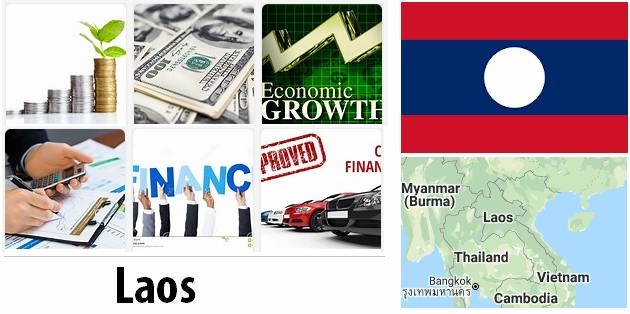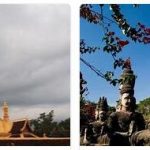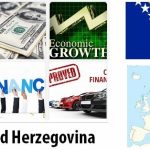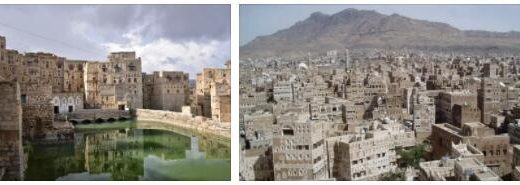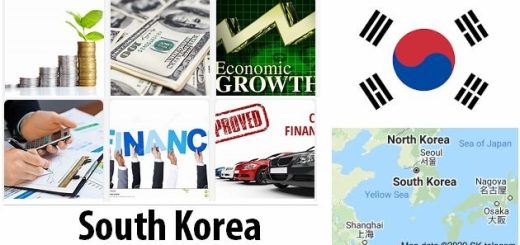Laos Economy Facts
Economical overview
Laos is one of the poorest countries in Asia. Poor communications and lack of both capital and educated manpower have left the country’s natural wealth largely unused, something that is now changing. A large majority of the population is employed in agriculture.
Industry and the service sector have grown rapidly since the transition from socialist planning economics to market economics began in the mid-1980s. Clothing and textile exports and the mining industry have expanded, and tourism, together with electricity production, is one of the country’s most important sources of foreign currency.
- Countryaah.com: Major imports by Laos, covering a full list of top products imported by the country and trade value for each product category.
Laos is dependent on foreign aid and loans. The aid covers both the constant deficits in foreign trade and the large holes in the state budget. Important donors are the IMF, the Asian Development Bank (ADB) and the World Bank, as well as individual countries such as Japan and Australia.
In 2002, Lao’s total foreign debt was approximately $ 2.7 billion. One year later, Russia wrote off 70 percent of the country’s debt from the time before the Soviet Union collapse in 1991. The remaining part will be paid off over a 30-year period.
Economic reform policy produced good growth during much of the 1990s. However, during the so-called Asian crisis of 1997–1998 (see Modern history), growth slowed; the crisis hit hard on Thailand, and Lao exports to neighboring countries shrunk while Thai investment in Laos declined. In 1998, GDP growth was negative while inflation soared.
- Abbreviationfinder.org: Check this abbreviation website to find three letter ISO codes for all countries in the world, including LAO which represents the country of Laos. Check findjobdescriptions to learn more about Laos.
Since the turn of the millennium, growth has regained momentum and inflation has slowed. The global financial crisis of 2008-2009 caused the growth to slow down temporarily as a result of lower exports, but after that the average growth has again been steady.
The causes of the economic upswing after the turn of the millennium are sharply increased foreign investment, especially in the mining industry, and the resumption of trade with the United States in 2004 after being discontinued in the early 1960s.
The economic success has mainly benefited the metropolitan area and the cities along the Mekong River. Rural development is still severely neglected, even though the government has made significant efforts to combat poverty through loans and assistance.
Obstacles on the road away from poverty are Lao’s extensive bureaucracy, which, among other things, leads to difficulties and hassles for small farmers and small business owners to obtain bank loans, and – not least – the widespread corruption at all levels of society. Many holders of power see a lure in enriching themselves with the ever faster recovery of the country’s natural resources.
A small Laotian stock exchange was opened in 2011. The purpose was that this, together with Lao’s entry into the WTO in 2013, would attract more foreign direct investment into the country.
Laos imports goods at a significantly higher value than the country’s exports amount to. All capital goods, oil products and industrial inputs are purchased from abroad. Exports mainly comprise electricity, minerals, wood products, clothing and textiles, and coffee. The constant deficit in foreign trade is offset by aid, loans and money that Laotians abroad send home.
Main trading partners are Thailand, China and Vietnam. Laos exports to EU countries on favorable terms, and much of its clothing production comes to Europe. Alongside official foreign trade, extensive smuggling operations are ongoing.
FACTS – FINANCE
GDP per person
US $ 2,568 (2018)
Total GDP
US $ 18 131 million (2018)
GDP growth
6.5 percent (2018)
Agriculture’s share of GDP
15.7 percent (2018)
Manufacturing industry’s share of GDP
7.4 percent (2018)
The service sector’s share of GDP
41.6 percent (2018)
Inflation
3.1 percent (2019)
Government debt’s share of GDP
57.2 percent (2018)
External debt
US $ 14 498 M (2017)
Currency
new chicken
Merchandise exports
US $ 5 295 million (2018)
Imports
US $ 6,164 million (2018)
Current account
– US $ 1,430 million (2018)
Commodity trade’s share of GDP
64 percent (2018)
Main export goods
electricity, minerals, wood products, clothing and textiles, coffee (2017)
Largest trading partner
Thailand, China, Vietnam (2017)
2006
December
Hmong members surrender
More than 400 members of the hmong people’s group submit to the authorities. They belong to the many hmong people who have lived as refugees in the jungle since 1975, when the US-friendly government that supported hmong was defeated by the communists.
June
Choummaly Sayasone becomes new president
Vice President Choummaly Sayasone succeeds Khamtay Siphandone as president after being appointed leader of the ruling Communist Party in March 2006.
